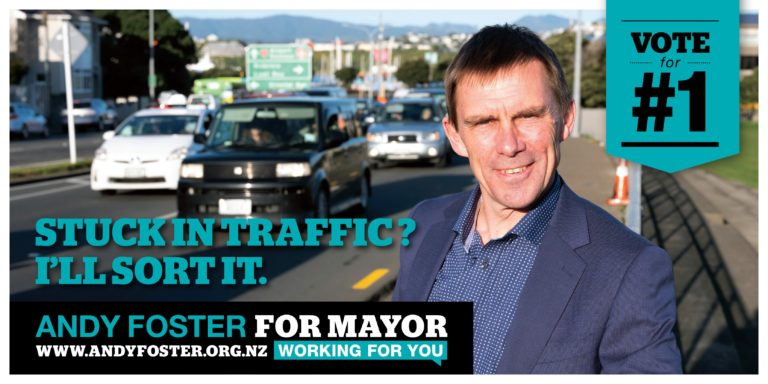
Benoit - 7 Mai 2021
A quick review of the progress in transportation in Wellington and a few suggestions that could help addressing congestion.
Halfway through the term of our beloved City Council, it’s appropriate to check progress on the biggest promise that was made during the election, in October 2019. The hot topic was transport. So, what has been achieved and what has been stalled since the new team was elected?
In the “moved forward” category, we find two deliverables from LGWM: safer (slower) speed limits, and cycleways. The slower speed limits have been implemented, and some cycleway projects have made a leap forward. For example, Wellington’s eastern gateway has been opened, enabling people who want to commute on a bike to do it in a safe manner (and even more so when the cycleway along Evans Bay is completed).
But for the rest, the delivery has been underwhelming. Is there a need to keep having a go at Let’s Get Wellington Moving? Apart from the two aforementioned projects, progress by LGWM seems to be at a standstill, with nothing but still more public consultation.
Some people have given up hoping that it will produce anything – and the LGWM name itself is now a sad joke (although this term is not short of bitter irony, hello “First to zero”, hi Shelly Bay).
There are things that could have done to address transport promises. They wouldn’t have required many dollars, but much political will would have been needed.
For example, a bus service between the airport and the railway station could remove hundreds of cars from the congested highway. The problem is that no amount of polite requests from the City Council and the Regional Council have persuaded the airport to allow public transport on to its turf. Who can blame the airport? Public transport is directly in competition with its car parking business … which is also a source of revenue for the shareholding City Council!
Saddening, however, to realise the council could easily pass a by-law to force any airport business (in this case, WIAL) to provide reasonable access for public transport if they want to operate in Wellington. But that would require political courage, and we also know the City Council has 2 of the 6 seats on the airport board.
Additionally, the City Council could have surfed the post-lockdown wave of working from home by encouraging people who could do so to work remotely, thus removing cars from the roads. The council could have embraced that change, campaigned in that direction, and met with government agencies and corporate businesses to support what is now common practice in the US and in Europe. Doing so, they would have also encouraged the rezoning of some business precincts into apartments, addressing the climate and housing crisis at the same time.
Such a transformative, visionary strategy is outlined on page 12 of Te Atakura, which was adopted last year by the City Council. But instead, the Mayor invited hordes of people to come back to the CBD. The council’s Regional Development Agency spent $75,000 to “attract more people to … the CBD.”
It seems “sorting out” the traffic is a long-gone goal. No one seems able to undertake the bold, transformative changes required to address Wellington’s growing pains and to meet Wellington’s climate change commitments. Meanwhile, we are still stuck in traffic.
Benoit, le 7 Mai 2021
opinion, insideWellington, scoop, airport, bus, lgwm, transport, workingFromHome
Article on Scoop
Inside Wellington

